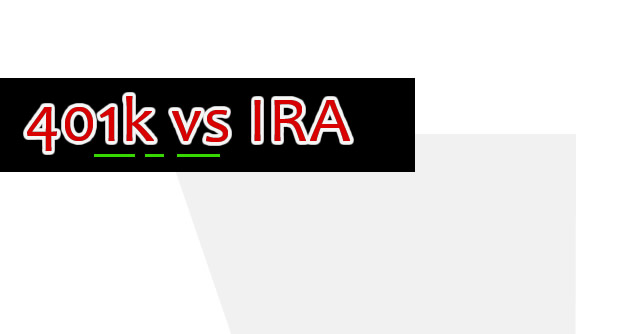Planning for retirement can feel overwhelming, especially with so many account options available. Two of the most common—and powerful—ways to save are 401(k) plans and Individual Retirement Accounts (IRAs). While both offer tax advantages, they differ in several important ways that can impact how you build wealth for retirement.
In this post, we’ll break down the key differences and help you decide which plan—or combination—might best suit your financial goals.
What Is a 401(k)?
A 401(k) is a retirement savings plan offered by employers that allows you to contribute a portion of your paycheck before taxes are taken out. Many employers also match part of your contributions, which is essentially free money for your retirement.
What Is an IRA?
An IRA, or Individual Retirement Account, is a tax-advantaged savings account you can open on your own through a bank, brokerage, or financial institution. It gives you more control over your investments compared to most employer-sponsored plans.
Contribution Limits in 2025
- 401(k): $23,500 annually, or $31,000 for those age 50 and older.
- IRA: $7,000 annually, or $8,000 for those age 50 and older.
Tax Advantages: Traditional vs. Roth
Both 401(k)s and IRAs come in Traditional and Roth formats. The main difference lies in when you pay taxes—either now or later.
- Traditional: Contributions are tax-deductible; taxes are paid upon withdrawal.
- Roth: Contributions are after-tax; withdrawals in retirement are tax-free.
Income Eligibility and Access
- 401(k): No income limits; depends on employer availability.
- IRA: Available to anyone with earned income, though Roth eligibility phases out at higher incomes.
Investment Options
- 401(k): Limited options chosen by employer.
- IRA: Wide range including stocks, bonds, mutual funds, and ETFs.
Employer Contributions
401(k)s often include employer matching, which is essentially free money toward your retirement. IRAs are funded solely by the individual.
Required Minimum Distributions (RMDs)
- Traditional 401(k)/IRA: RMDs start at age 72.
- Roth 401(k): RMDs required starting at 72.
- Roth IRA: No RMDs during the account holder’s lifetime.
Early Withdrawal Rules
- 401(k) & Traditional IRA: 10% penalty before age 59½ unless exceptions apply.
- Roth IRA: Contributions can be withdrawn anytime; earnings may be taxed/penalized if withdrawn early.
Portability and Rollovers
401(k) funds can be rolled into an IRA or a new employer’s plan when you switch jobs. IRAs can be transferred between custodians and sometimes into a 401(k) if allowed.
So, Which Should You Choose?
In many cases, the best approach is a combination:
- Start with your 401(k) to get the full employer match.
- Contribute to a Roth IRA for tax-free growth and flexibility.
- If you still have funds, go back and max out your 401(k).
Final Thoughts
Both 401(k)s and IRAs are valuable tools for building your retirement nest egg. Understanding their unique features allows you to make smart, informed choices that align with your financial future.
Still unsure? Consider speaking with a financial advisor to tailor your retirement savings strategy to your unique goals and lifestyle.
Other Posts
- The New Gold Coin for Ghana (GGC): Value, Benefits, and How to Buy
- How to Pay Less Tax in Ghana: Smart Income Tax Planning Strategies for 2025 and beyond
- How to Reduce Your Taxable Income Legally in Canada: 2025 Legal Tax Hacks
- Slash Your IRS Bill: 10 Legal U.S. Tax Reduction Strategies for 2025
- Pension Benefits in Ghana: How to Maximize Your Retirement Contributions
- How to Reduce Your UK Income Tax Bill: 10 Smart Legal Strategies
- Ghana’s 2026 VAT Update: Understand the New Rate and Its Business Impacts
- Gold Soars Above $3,300 as US Chip Export Curbs to China Trigger Market Sell-Off
- US Tightens Chip Export Rules to China: What It Means for Global Chipmakers
- Exchange Rates: How Currencies Gain or Lose Value
- Training for Speed: Expert Tips to Improve Your Sprinting Performance
- SMART Fitness Goals: The Key to Staying Motivated and Reaching Your Fitness Potential
- Fitness Tracking Devices: Do You Really Need a Smartwatch?
- Enhance Your Training with Wearable Fitness Tech: Track, Improve, Achieve
- Why Recovery Matters: Understanding the Role of Rest Days for Fitness Progress
- Fitness Strategies: How to Build Lean Muscle Effectively
- Maximize Your Workout Results: Top Foods to Eat Before and After Exercise
- Real Estate Crowdfunding: A Low-Cost Way to Invest in Real Estate
- Real Estate Investing Strategies: How to Flip Houses & Build Passive Rental Income
- Mobile Payments: The Future of Fast and Secure Transactions
- AI in Finance: How Artificial Intelligence is Revolutionizing Financial Services
- The Future of Insurance: How InsurTech is Disrupting Traditional Models
- Understanding Your Financial Behavior: The Psychology of Money & How to Manage It
- Breaking Free from Debt: Proven Strategies to Achieve Financial Freedom
- The Hidden Dangers of IoT: How to Safeguard Your Connected Devices
- IoT and Agriculture: Feeding the World with Technology
- AI Investing: Best AI Stocks to Improve your portfolio
- AI Creativity : Can Machines Truly Innovate
- IoT For Business Efficiency: Key Benefits and Applications
